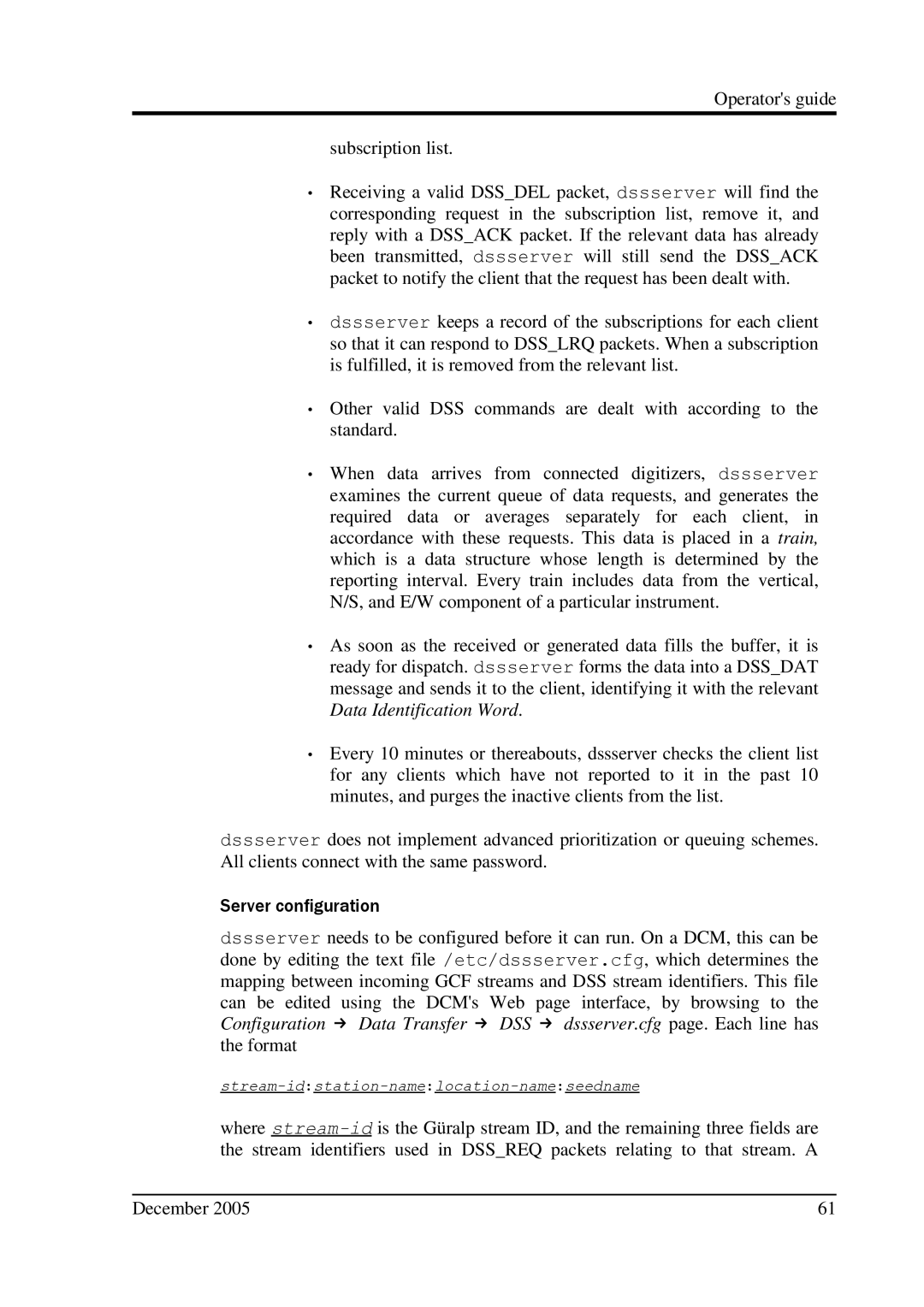
Operator's guide
subscription list.
•Receiving a valid DSS_DEL packet, dssserver will find the corresponding request in the subscription list, remove it, and
reply with a DSS_ACK packet. If the relevant data has already been transmitted, dssserver will still send the DSS_ACK packet to notify the client that the request has been dealt with.
•dssserver keeps a record of the subscriptions for each client so that it can respond to DSS_LRQ packets. When a subscription is fulfilled, it is removed from the relevant list.
•
•
Other valid DSS commands are dealt with according to the standard.
When data arrives from connected digitizers, dssserver examines the current queue of data requests, and generates the required data or averages separately for each client, in accordance with these requests. This data is placed in a train, which is a data structure whose length is determined by the reporting interval. Every train includes data from the vertical, N/S, and E/W component of a particular instrument.
•As soon as the received or generated data fills the buffer, it is ready for dispatch. dssserver forms the data into a DSS_DAT message and sends it to the client, identifying it with the relevant Data Identification Word.
•Every 10 minutes or thereabouts, dssserver checks the client list for any clients which have not reported to it in the past 10 minutes, and purges the inactive clients from the list.
dssserver does not implement advanced prioritization or queuing schemes. All clients connect with the same password.
Server configuration
dssserver needs to be configured before it can run. On a DCM, this can be done by editing the text file /etc/dssserver.cfg, which determines the mapping between incoming GCF streams and DSS stream identifiers. This file can be edited using the DCM's Web page interface, by browsing to the Configuration → Data Transfer → DSS → dssserver.cfg page. Each line has the format
where
December 2005 | 61 |
